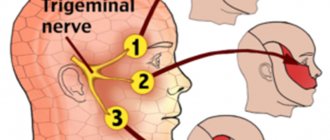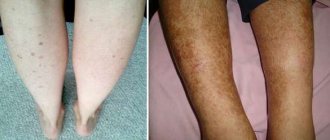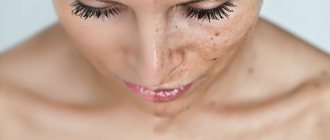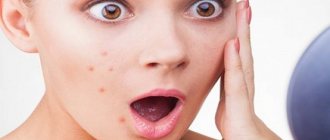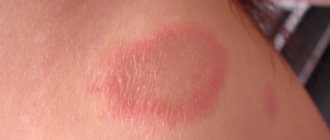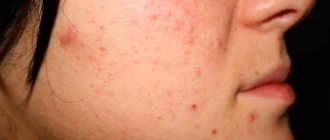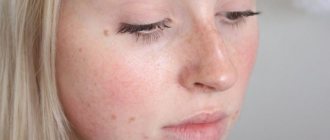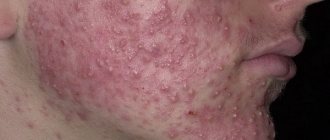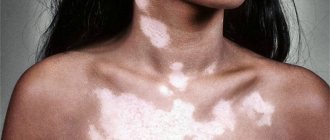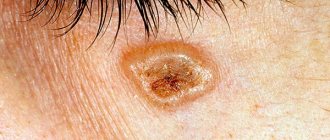Excessive exposure to sunlight on the skin causes premature aging. Pigmentation in the sun occurs very quickly, and while playful freckles are touching, blurred brown spots cause panic.
Women who are sensitive to ultraviolet radiation suffer doubly - the sun causes real burns. However, you don't have to hide in the shade to protect yourself from UV rays...
Sunlight is ultraviolet (or electromagnetic) radiation. UV radiation penetrates the epidermis (the top layer of skin), which triggers the production of new cells and keratin - the skin becomes tougher and rougher. But the sun's rays also penetrate into the deep layer of skin - the dermis. And then collagen (elastic fibers that give the skin elasticity) is destroyed, that is, the skin becomes thicker and its texture worse.
As a result, you will see wrinkles. Are you under 30 yet? Ultraviolet doesn't care how old you are. Is it time to grow old? It has its own “aging” mechanism, independent of genetics and health status. All this happens through the activation of cell-damaging agents – free radicals – through UV rays. Nature has provided a protective reaction for us. Under the influence of sunlight, melanin is produced in the skin and it darkens, becoming tanned. But. UV rays often come in excess and persistently lead to so-called photoaging. Pigment spots on the face from the sun are another negative effect.
There are three types of sun rays - A, B, C. The most dangerous are B and C, because of them, pigmentation, sunburn, and wrinkles occur most quickly. B-rays can also affect DNA molecules in skin cells and increase the activity of free radicals, which weaken the skin's natural defense system. And if type C rays are restrained by the ozone layer, then the probability of falling under the radiation of ultraviolet A and B rays is quite high - these rays are especially active in the period from 10:00 to 16:00. Remember this so that sun spots on your face do not spoil the impression of your vacation and do not “add” another 5 years to your age. That's not all.
Excessive exposure to the sun on the skin provokes sunburn of varying degrees of severity, photodermatitis, the appearance of nevi and other neoplasms.
But how good we are with a beautiful tan... Don’t give it up. If so, then we arm ourselves:
P.1 Knowledge of protection from UV radiation P.2 We understand external means against ultraviolet radiation P.3 We are saturated from the inside with antioxidants that save the skin from UV
Facial pigmentation, what is it?
The appearance of spots on the face occurs as a result of exposure to coloring pigment cells. With disorders, skin color changes in one direction or another.
The color pigment depends on a person's genetic makeup, which includes different combinations of brown, yellow, red and blue coloring cells.
Spots can appear on any part of the face, legs, arms, back.
Most often, age spots form in areas that are more often exposed to the sun.
Dermatologist Jennifer Trent
The brown pigment melanin determines the color of human skin and prevents the harmful effects of ultraviolet radiation on it. Increased pigmentation is often observed due to excessive tanning.
If you have fair skin, severe pigmentation is more noticeable. They can appear in the form of spots, freckles and moles on the face. If melanin lies deep in the skin, the spots look especially bright; if closer to the surface, they have a pale brown tint.
How to protect yourself from pigmentation?
The most effective protection against ultraviolet radiation is sunscreen. Sunscreens have a special protection factor, which is abbreviated SPF (sun protection factor or in Russian - “solar protection factor”). SPF is a factor that indicates how long you can spend in the sun before you can get sunburned.
In more detail, it indicates how many times the minimum erythemal radiation dose increases when using this product. So, with SPF 30 you can stay in the sun thirty times longer than without cream. For example, if a person can get sunburned in the sun for 20 minutes, then with this sunscreen product, he can be exposed to the sun for 300 minutes, that is, for five hours.
Thus, SPF 15 protects the skin from 95% of UV-B radiation, SPF 30 – from 98% of UV-B radiation. In other words, the increased protection factor is not the degree of protection, but the time of protection.
UV-B radiation
This type of radiation is marked on the label as UVB, that is, it protects the skin from ultraviolet rays of group B. Previously, it was believed that this particular type of radiation was particularly dangerous, since a burn would form on unprotected skin quite quickly. However, recent scientific research has refuted this claim. UV-B radiation does not cause deep damage to the skin, since burned skin is removed along with damaged cells as a result of molting (after a burn).
UV-A radiation
This type of radiation is represented by the abbreviation UVA. This type of radiation was considered completely harmless, but this turned out not to be the case. The fact is that previously it was impossible to sunbathe for a long time, since burns quickly appeared. But nowadays, when the cream protects against burns, a person remains under the sun for a long time. And during this time, UV-A radiation penetrates deep into the skin, also through clothing and glass.
If the effect of group B rays becomes noticeable immediately, the skin turns red and blisters form on it, then group A rays are much more insidious: there are no direct effects on the skin of this type of radiation, but radiation can make itself felt after many decades.
One thing to pay attention to is that some creams are labeled as sunscreen, while others are labeled as anti-tanning cream. Why is that? This depends on the composition of the sunscreen.
Causes of pigmentation
Doctors distinguish between internal and external causes of the problem.
Internal include:
- Lack of vitamins. Vitamin B12 deficiency provokes darkening of the skin. It regulates pigment synthesis, thereby preventing the formation of new age spots. Vitamin A fades dark shades. Vitamin E in sufficient quantities reduces the risk of skin damage resulting from intense exposure to sunlight.
- Poor blood circulation. In case of stagnation, the blood is not able to completely free itself from toxins and breakdown products. They appear on the skin in the form of age spots.
- Gallbladder dysfunction. If the liver is not provided with the necessary enzymes, cholesterol is formed, which clogs the blood vessels, and lipid metabolism is disrupted. As a result, pigmentation appears on the face.
- Intestinal slagging. Improper functioning of this organ interferes with metabolic processes in the body, resulting in darkening of the skin.
- Diseases of the cardiovascular and nervous systems , especially over the age of 40.
- Hormonal imbalance in the body during pregnancy and childbirth, gynecological diseases and thyroid problems.
- Kidney diseases. The appearance of yellowish-brown pigment spots often indicates problems with kidney function.
- Long-term use of certain medications. As a result of this treatment, the skin may acquire a dark tint in places.
- Stress. If you are in a stressful state for a long period, then you may encounter the appearance of pigmentation. In such a situation, you need to normalize your psychological state.
Since the causes of pigmentation are different, treatment methods must be individual in each case.
The reasons for the appearance of spots can be determined by their appearance. Reddish-colored formations occur if the intestines are not functioning well. Brown pigment spots on the face often indicate liver and gallbladder disease.
Kidney failure is often signaled by light spots on the cheeks with a yellowish tint.
Excess pigment (aka melanin) can be deposited in the top layer of skin (superficial epidermis) or deeper in the dermis of the skin. The deeper the pigment, the more difficult it is to treat.
Dermatologist Jennifer Trent
External reasons
External reasons include:
- Active sun rays. They not only cause burns, but also stimulate excessive melanin synthesis in the deep layers of the skin. The body can react in a similar way to visiting a solarium. Pigmentation is especially noticeable in the spring, because after winter frosts the skin loses melanin, and intense exposure to ultraviolet radiation produces pigment unevenly.
- The appearance of acne. When squeezing out pustules and applying a thick layer of camouflage makeup, there is a risk of residual effects in the form of scars and spots.
- Age-related pigmentation. After reaching the age of forty and fifty years, many women develop large brown spots on their face and arms. This is clearly visible when looking at photos of women before and after 50 years. They are not dangerous in themselves, but they spoil the appearance. This phenomenon can only be treated with the help of cosmetology achievements.
- Allergies to cosmetics or food. If you do not get rid of inflammation, peeling and rashes in time, dark marks can remain for a long time.
If you are prone to excessive pigmentation, during the period of active sun (during the morning and afternoon hours) you need to hide your face, arms and shoulders.
When the skin is damaged, there is inflammation, and pigmentation can increase. This occurs because cells called melanocytes trigger the production of melanin. This is known as post-inflammatory hyperpigmentation (PIH).
Dermatologist Jennifer Trent
Hypersecretion of melanocyte-stimulating hormone
The skin darkens when the level of melanin, a coloring pigment contained in special cells called melanocytes, increases. The production and release of this substance into the skin is activated under the influence of one of the pituitary hormones - melanocyte-stimulating.
Active synthesis of this hormone occurs in Addison's disease, one of the main causes of skin hyperpigmentation.
Addison's disease is a chronic adrenal insufficiency that occurs due to tuberculosis, infection, amyloidosis and other damage to these important organs. The adrenal glands stop synthesizing hormones, to which the body responds with increased secretion of a substance that stimulates their hormonal activity - adrenocorticotropic hormone (ACTH), thus trying to restore their activity. The physiology of this process is such that, simultaneously with the increased production of ACTH, the release of melanocyte-stimulating hormone, which causes darkening of the skin, also increases.
In Addison's disease, the skin is bronze, golden brown, or dark gray in color, often looking like a deep tan. Pigmentation is especially noticeable in open areas - the face, hands, as well as in places where clothing rubs, for example, on the neck. The skin also darkens in the genital area, nipple areolas, and postoperative scars. Dark spots also appear on the oral mucosa.
If you suspect Addison's disease, you should consult an endocrinologist.
Types of pigmentation on the face
There are many types of pigmentation on the face. In order to eliminate this problem as effectively as possible, it is necessary to initially establish exactly the causes of its occurrence.
In this case, it is best to contact an experienced cosmetologist who will make the correct diagnosis and prescribe adequate treatment.
Freckles. Miniature yellowish darkening, which becomes more pronounced when exposed to sunlight. With age, their number usually decreases. Cosmetologists recommend using sunscreen to protect yourself from the appearance of new freckles.
Chloasma. Pigment formations that appear against the background of changes in hormonal levels due to pregnancy, gynecological diseases, dysfunction of the endocrine system, usually in adults, which requires treatment.
Birthmark. This is a miniature benign neoplasm. If desired, it can be removed by laser or cryotherapy.
Lentigo. Dark brown spots that appear on the face due to ultraviolet radiation. Usually found in old age.
Vitiligo. These are white spots that occur due to a disruption in the formation of melanin. The tendency to the disease is hereditary.
If you notice age spots on your face, start treatment immediately. The deeper they penetrate the skin, the more difficult it will be to fight them!
Types of Sunscreens
All sunscreens contain special filters that neutralize the effects of ultraviolet radiation. They are called ultraviolet filters (UV filters). These filters contain substances that block the action of ultraviolet radiation. They are:
- physical;
- chemical.
Physical filters, like a mirror, reflect and scatter ultraviolet rays. Physical filters contain zinc oxide and titanium dioxide.
Chemical filters consist of substances that are able to absorb sunlight and convert them into heat that is harmless to the skin.
Treatment of age spots on the face
Treatment of age spots on the face will directly depend on the causes of their occurrence. If the appearance of spots is not associated with other serious diseases, then in this case special cosmetic skin whitening procedures may be prescribed.
In some cases, there is no treatment, but you may experience an improvement in appearance. You will need to undergo certain procedures for life to prevent pigmentation from becoming brighter.
Dermatologist Jason Emer
To find out what hardware techniques exist for rejuvenation, correction of the face and body, as well as what techniques are used for hair removal, we recommend watching the video of a qualified specialist in this field, Evgeniy Shagov:
There are several methods for treating age spots:
Whitening products
To whiten skin with age spots on the face, use hydrogen peroxide, zinc ointment and mercury cream. These medications should be used with caution to avoid damaging the skin.
In particular, apply them exclusively to problem areas. These drugs can be used at home.
You should not use whitening gels and creams constantly; you need to take short breaks, otherwise the skin will become dry and flabby.
Cosmetics for age spots
Hyperpigmentation can be treated with medications, creams, and ointments. Creams with hydroquinone have a good effect, but it is difficult to find such products now, since creams like Achromin are very toxic.
Peels with inorganic acids, such as salicylic acid, are also used for treatment.
If hyperpigmentation is not an accompanying symptom, a procedure such as mesotherapy or phonophoresis may be prescribed. Such procedures stabilize melanin production and whiten the skin.
Mesotherapy is used in the initial stages of pigmentation, when the spots are small and have a light brown tint.
Azelaic acid, ascorbic acid (vitamin C), and licorice root extract may also reduce hyperpigmentation because they affect the enzyme (tyrosinase) that catalyzes the production of melanin.
Dermatologist Jason Emer
Cosmetic procedures
This includes chemical and laser peels, microdermabrasion, and phototherapy. These procedures must be carried out by an experienced cosmetologist.
Chemical peeling differs from laser peeling in that instead of laser, a combination of acids is used to prevent the formation of melanin. The disadvantage of laser peeling is that it cannot treat deep pigmentation.
The phototherapy process uses infrared rays to destroy cells with excessive melanin content.
After peeling, microdermabrasion or mesotherapy, it is not recommended to be exposed to direct sunlight! If this cannot be avoided, apply sunscreen when going outside.
If the problem is clearly expressed, the doctor may prescribe more serious procedures - laser resurfacing or products with trichloroacetic acid.
Here it is worth remembering that you should not be exposed to the sun for at least seven days after the procedures - your face will be red and inflamed.
Pigmentation disorders in children
The appearance of pigment spots on a child’s body is not always a cause for concern. In most cases they are harmless, but sometimes they are a symptom of diseases of the internal organs.
Hyperpigmentation in a baby can be congenital or acquired. The first group also includes marks that appeared as a result of complications that arose during the process of obstetrics.
Most often, the following types of spots are found in children (including infants):
- hemangioma - a pink or red formation is not associated with an excess of melanin. This is a benign tumor formed due to damage to the capillaries. It is more often recorded in girls under six months. In 70% of cases, it disappears on its own before the age of seven. Removal is required if there are signs of malignancy of the formation, as well as if it has formed on the internal organs of the baby;
- Coffee stains are common in newborns and vary in color from beige to brown. They appear in the first 14 days of life and disappear on their own after a few months;
- telangiectasia (“stork’s kiss”) – pink marks on the back of the head, temples, forehead or cheeks. They are formed due to intrauterine pressure from the mother’s pelvic bones on the fetus at the end of the third trimester or due to trauma to the baby’s skin when passing through the birth canal. More often, telangiectasias gradually fade, become invisible, and sometimes remain for life. They are not harmful to health;
- nevus (moles) are dangerous due to their ability to degenerate into a malignant tumor and require observation. More often due to genetic predisposition;
- “Mongolian spot” is a type of large nevus that looks like a hematoma. Usually localized on the buttocks, legs, and lumbar region. 90% of cases occur in children of the Mongoloid race or those born from mixed marriages. Associated with the peculiarities of melanin synthesis in representatives of certain nationalities (for example, Chinese or Africans);
- Freckles appear in children with a genetic predisposition after one year. Absolutely harmless, one tone darker than the natural color of the skin, and become brighter in the sunny season.
Any skin changes in a small child require observation and medical supervision. In some cases, conservative or surgical treatment may be required.
The effect of cosmetic procedures
Cosmetology procedures carried out in the salon will help, if not completely get rid of stains, then lighten them by two or three tones. For complete removal, it is recommended to undergo several skin lightening procedures.
Also, after the procedures, the complexion improves and the skin becomes more delicate. If you approach the removal of age spots correctly, and then follow the recommendations for preventing relapses, you can get rid of this problem completely.
Gray facial skin - a disease or a consequence of bad habits
A sharp and noticeable change in complexion from natural and healthy to gray is most often a sign of a malfunction of the digestive system . At best, your face may turn gray due to banal constipation or poor nutrition, at worst, due to gastritis or the development of a stomach ulcer. It is hardly possible to independently diagnose the disease on the basis of dyschrony alone, so in this situation it is better to go to an appointment with a gastroenterologist.
In addition, gray facial skin does not always portend illness. Often, against the background of smoking, sedentary work and constant stress, people's blood circulation is impaired and blood vessels narrow, which is also manifested by a deterioration in complexion.
Contraindications
All cosmetic procedures aimed at getting rid of age spots have their own contraindications and side effects. You may be refused entry to the salon in certain cases.
CONTRAINDICATIONS
- taking glucocorticosteroid hormones;
- diabetes;
- serious skin problems, such as acne.
It is also highly not recommended for pregnant and lactating women to undergo such procedures.
If spots appeared during pregnancy, you should not remove them, especially with the help of chemicals. After the baby is born, the spots will gradually lighten and disappear completely.
The main causes of the development of acanthosis nigricans
Acanthosis nigricans can develop in a person of any gender and age, and the causes for each patient are individual and specific.
Predisposing factors for the development of acanthosis nigricans are:
- Pathologies in the functioning of endocrine organs.
- Malignant neoplasms provoke many complex biochemical and immune system reactions. Men are susceptible to acanthosis in the presence of pancreatic cancer, prostate cancer, women - in the presence of ovarian and mammary gland cancer.
- Heredity influences the development of acanthosis. In case of metabolic disorders and mental inferiority, which are caused by hereditary pathology, for example, with Rood and Miescher syndromes, acanthosis develops.
- Taking estrogen hormones and certain other medications.
Folk remedies (TOP list)
There are many folk methods with which you can lighten age spots a little.
All folk remedies will help only if the age spots are flat and do not rise above the skin (moles).
Traditional recipes are an excellent remedy for combating chloasma or freckles, but still, before using them, it is recommended to consult a dermatologist.
Folk remedies should be used regularly until you achieve the desired result. All products should be applied only to pigmented areas of the skin. Afterwards, apply moisturizer or baby cream to your face.
• Starch and lemon juice are good for getting rid of age spots. To prepare the mixture you will need freshly squeezed lemon juice and starch. Mix to form a creamy paste and apply to problem areas. Wash off after 20-30 minutes.
• Fresh juice of parsley, cucumber, lemon or orange is also good for whitening. Just apply the above juices (one, not several at once!) to problem areas, rinse with water.
• You can prepare an anti-stain gel. For this you need fresh parsley. Grind it and add a small amount of water. Place on the fire and wait until it boils. Pour the mixture into a separate bowl. Can be stored in the refrigerator for several days.
• White clay is an excellent remedy. Mix it with lemon juice or a small amount of hydrogen peroxide. It should be a porridge-like mixture. Apply it to problem areas several times a day.
• Pepper mask will not only brighten your face, but also make your skin more delicate. Grind one sweet pepper thoroughly; you can add honey or lemon juice to the pulp. Apply the resulting mixture to problem areas for 20 minutes.
• Take the egg white, add a pinch of salt, beat. Add a little white clay to the mixture to make a homogeneous mass, not liquid and not too thick. Use several times a day.
• A mask with lemon and horseradish is very effective, but it is recommended to apply it for no more than 10 minutes. Be careful not to get the mixture into your eyes! To prepare, take horseradish root, grind it using a grater or blender, add the juice of half a lemon. You can add a spoonful of honey, previously melted in a water bath.
• Yeast mask - easy to prepare. For it you will need 25 grams of fresh yeast, a little lemon juice and full-fat milk. Mix everything until smooth and gently apply to the skin.
• Cottage cheese is also an affordable and proven remedy against hyperpigmentation. To prepare the mask, take a little cottage cheese, 200 grams will be enough, add ten drops of hydrogen peroxide and the same amount of ammonia to it. Use daily, each time you need to prepare a new portion.
• For bleaching, you can use kefir, as well as any other fermented milk products.
There are a huge number of mask recipes; you can individually choose one or another composition. The main products that are used for treatment are quite simple and accessible to everyone - cucumbers, fresh cabbage, various berries, yeast, hydrogen peroxide.
The most effective ingredients are considered to be cucumbers, parsley, lemon juice and honey. When preparing masks, focus on these ingredients.
When using the mask for the first time, carefully study its composition - you may be allergic to some individual ingredients.
Be especially careful with honey. It is recommended to apply a mask with this composition for the first time on the bend of the elbow.
What causes white spots to appear on the skin?
White spots on the skin... Do you have them? Or maybe they were before? For example, during the hot season on the beach, you can often see how unsightly such light spots look on someone’s skin.
What causes them to appear? Sometimes such spots appear on the back or face. and also on the skin of very young people. Where are they from? What treatment should you follow? Today we will talk about this common phenomenon. However, as always, we remind you that if you have any doubts or concerns, you should consult a doctor or a dermatologist (in this case).
Tinea versicolor?
The so-called “lichen versicolor” occurs quite often. However, there is no need to worry, because this is not a serious disease and it goes away over time. Tinea versicolor appears as white spots on the skin, especially on:
- Chest and back
- Arms and legs
- Areas that typically experience sun exposure during the summer
Marks appear especially often with the onset of warm weather in early autumn. Typically, white spots can be seen on the skin of young people, because they sweat more, experience hormonal changes and increased humidity.
As we said earlier, there is no threat in them, they are not contagious and do not cause pain. The only problem is the appearance of unsightly spots on the skin, which are not so easy to get rid of.
How to treat lichen versicolor?
Tinea versicolor is a type of fungus, which is why it requires treatment. We mentioned earlier that it is quite effective, so no need to worry. The most commonly used treatment methods are:
- Antifungal medications such as terbinafine or miconazole are excellent for treating this infection.
- Selenium sulfur shampoo also helps a lot. You just need to apply a small amount of the product to the problem area before going to bed so that it has time to work. Then take a bath in the morning to wash off the shampoo. It's simple.
- If you prefer natural remedies, try aloe. It helps remove the white spots a little. Simply apply the plant gel to the problem area, give it a gentle massage and leave it on for a few hours to work. Then take a shower.
- It is worth noting: if after at least two weeks of using the above methods, the white spots do not begin to disappear, you need to consult a dermatologist.
Vitiligo symptom
Vitiligo is a much more serious disease. It is associated with the loss of the pigment melanin. This is a problem of the immune system in which a malfunction occurs: the body begins to attack and destroy melanocytes.
Vitiligo is an immune disease associated with the loss of melanin pigment.
Let's take a closer look at the characteristics of the disease:
- These white spots can appear anywhere on the body. Sometimes they are large, sometimes small, and also differ in shape.
- They do not cause discomfort, pain, itching or irritation. They appear without any symptoms and begin to become more noticeable over time.
- White spots usually appear on the skin of people who live in high humidity.
- Sometimes these white patches may turn brown and begin to peel. That's when you will experience unpleasant sensations.
Is there a cure for vitiligo?
- Unfortunately, there is no effective treatment for vitiligo. This autoimmune disease quite often occurs due to a genetic predisposition, so it does not stop effectively destroying melanocytes.
- Sometimes they try to return the original skin color with the help of steroids and immunomodulators, but this does not always work. Experts advise using sunscreen to protect hypopigmented areas of the skin from sun damage.
- When it comes to natural remedies, many people use aloe vera, turmeric dressings and mustard oil to prevent the appearance of white spots. So, the marks on the skin will not disappear, however, with regular use, over time you will begin to notice that they have become a little smaller. Plus, it's a great way to take care of your skin.
Symptom of nutritional deficiency
This is also worth considering. Sometimes you don't eat right, and that's why you suffer from a significant lack of vitamins and minerals. You need to be especially careful about small white spots and try to prevent them from appearing. If you still have them, see your doctor to have him examine you.
This is also worth considering. Sometimes you don't eat right, and that's why you suffer from a significant lack of vitamins and minerals. You need to be especially careful about small white spots and try to prevent them from appearing. If you still have them, see your doctor to have him examine you. These spots may be a sign of nutritional deficiency:
- Sometimes white spots on the skin can appear due to a deficiency of calcium, vitamin D and vitamin E, which contributes to their appearance. Never forget to eat calcium-rich foods! These include not only dairy products. Vegetables are also very high in these nutrients for skin and bone health.
- Sometimes white spots caused by poor diet are not that harmful, but they can also indicate that your diet is unbalanced. It is always worth seeking advice from a doctor.
- Don't forget that there are many nutritional ingredients that can help improve the health of your skin. For our part, we advise you to improve your diet so that it is complete and balanced. This will be an excellent prevention of the appearance of such minor problems as white spots.
Preventive measures
Even after bleaching your face in a salon, there may be a risk of relapse. To prevent this from happening, it is necessary to take simple preventive measures:
- Try to avoid exposure to the sun. If you go to the beach or any other sunny place, be sure to wear a wide-brimmed hat and use sunscreen. It is recommended to do cosmetic procedures in autumn or winter; at the same time you need to take tyrosinase blockers.
- After the whitening procedure, you must regularly use a cream with protection of at least 30. The cream must be applied evenly and at least 20 minutes before going outside. At the same time, do not forget that it is necessary to renew the layer of cream every 4-5 hours, while removing the remnants of the old one.
- To prevent relapse, it is recommended to wipe your face with cucumber or parsley juice every morning and evening. You can make special ice cubes and wipe your face with them.
To protect yourself from the appearance of hyperpigmentation, it is important to apply sunscreen (at least 30 SPF) before going outside. Heliocare antioxidant supplements are also helpful for internal protection against free radicals.
Dermatologist Jason Emer
Which doctor should I contact?
If there is widespread or limited discoloration of the skin, you should consult a dermatologist. After ruling out skin diseases, the patient is usually referred to a general practitioner, where he undergoes an examination of the internal organs. After clarifying the diagnosis, a consultation with a specialized specialist is scheduled: endocrinologist, gastroenterologist, hepatologist, hematologist, oncologist.
The disease acanthosis nigricans was described in the 9th century and is considered quite rare. The development of acanthosis is accompanied by the appearance of areas of hyperkeratosis in the area of natural skin folds. In these areas, increased pigmentation and skin papillomatosis are found. Large folds of skin are usually affected - the armpits, groin and neck. Timely detection of acanthosis in the early stages can indicate serious processes. Why acanthosis is dangerous and how to recognize it, read on estet-portal. com.
Expert opinion
- Surgeon
- Cosmetologist
Elsa Borodina
plastic surgeon
Mesotherapy is often used to eliminate pigmentation. For this purpose, the drug Gluta-1200 (glutamine) is used. You can make cocktails with vitamin C, since ascorbic acid causes bright skin whitening. DMAE and hyaluronic acid also have a slight whitening effect.
Irina Dorofeeva
practicing cosmetologist
If pigmentation appears, you should initially go to a dermatologist.
An examination by an endocrinologist, gynecologist, or gastroenterologist may be necessary. If the occurrence of age spots is not associated with any disease, then a cosmetologist can help. Particularly effective procedures are mesotherapy, chemical peeling, and fractional treatment. In the future, people prone to pigmentation should use sunscreen, and after a while they will need to undergo a second cosmetic procedure. Remember that the problem can be prevented rather than having to deal with it for a long time. If you are prone to the appearance of age spots, buy good cosmetics for yourself, and do not forget about traditional methods.
Try to stay in the sun as little as possible, do not visit the solarium. It is very difficult to get rid of age spots; it is much easier to prevent their appearance.
Hyperpigmentation due to medications
If the cause of darkening of the skin is unclear, the doctor should ask the patient if he is taking any of the following medications:
- oral contraceptives;
- chloroquine and hydroxychloroquine;
- preparations of silver, gold;
- amiodarone;
- busulfan and bleomycin;
- aminazine
Combined oral contraceptives can cause liver dysfunction with the development of parenchymal jaundice. Chloroquine and its derivatives are used to treat malaria, photodermatoses, as well as connective tissue diseases - systemic lupus erythematosus, rheumatoid arthritis. These products may cause the skin to turn bluish-gray.
The use of silver in dietary supplements, the use of salts of this metal as antiseptics for washing urinary catheters, long-term use of protargol can cause argyrosis: gray-blue discoloration of the skin. The use of krizanol (a gold preparation) can lead to a purple coloration of the skin.
Long-term use of amiodarone or cordarone for cardiac arrhythmias sometimes causes exposed skin to turn brown or gray.
Busulfan and bleomycin are used to treat malignant tumors. These drugs often cause darkening and other changes in the skin.
Aminazine is used in psychiatric practice. With prolonged use, it turns the skin gray.
